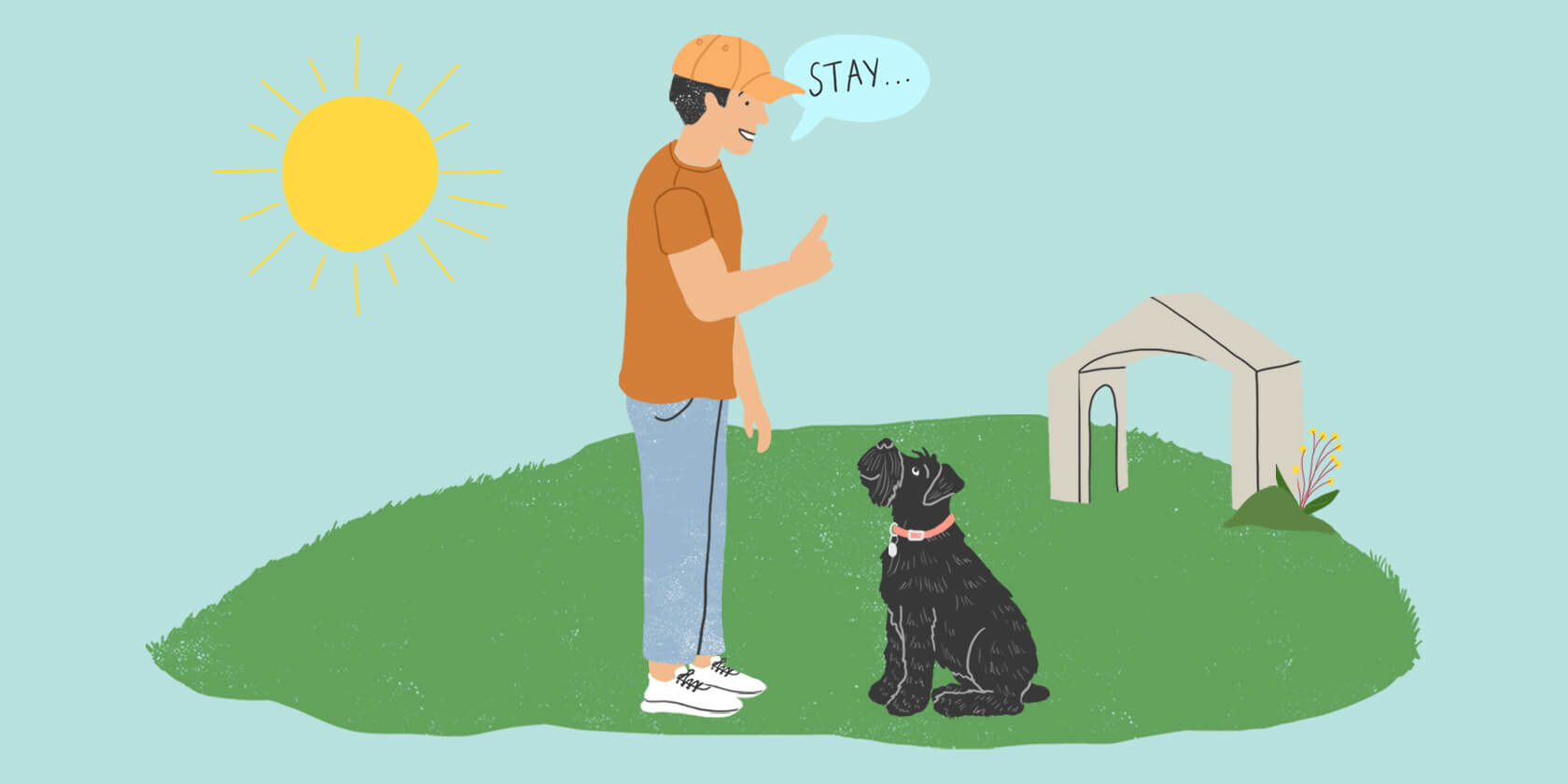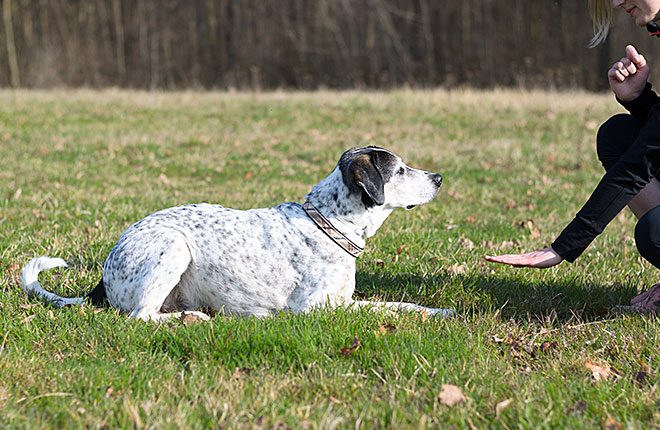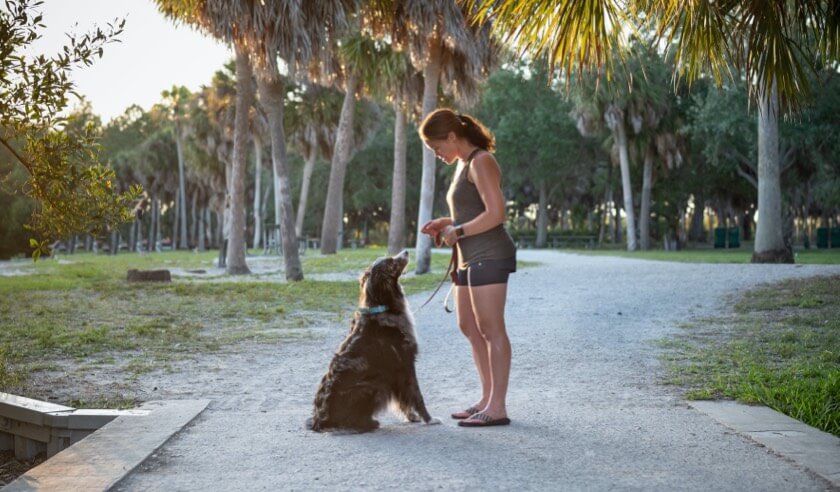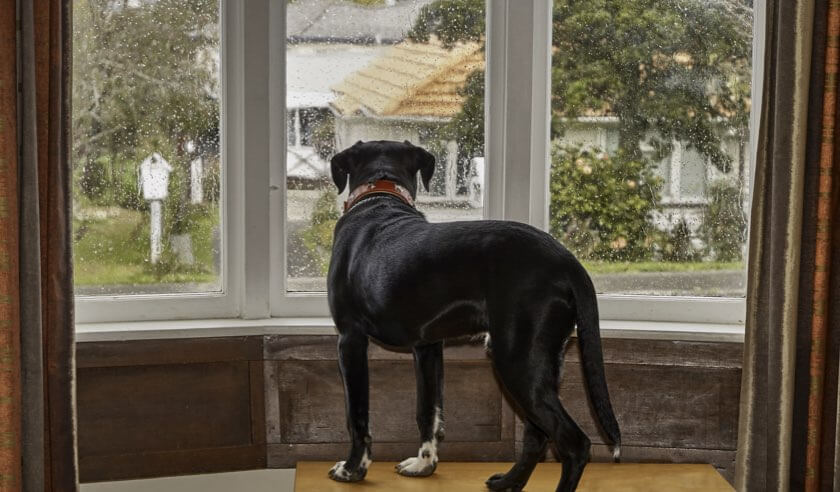After you’ve taught your dog how to “sit” and “come”, you can move on to teaching them how to “stay”. This command is an important one, especially for young, rowdy puppies or dogs that are prone to exploring where they shouldn’t be.

- Step 1: Have your dog “sit” and give them some positive verbal reinforcement. Easy, right? Then hold your arm straight out in front of you with your palm facing your dog. This is the hand signal for “stay.”
- Step 2: Take a couple of steps back, still holding your palm out. Wait a few seconds and return to your dog — touch their collar before letting them enjoy a treat. Repeat this several times.
- Step 3: Now when you put your palm out, add the word “stay.”
- Step 4: Once your dog has a handle on Steps 1–3, up the ante by moving farther and farther away, or staying away longer before coming back. If they break their “stay” too early, that’s okay — just move closer and give it another shot.
- Step 5: It’s time to vary things up a bit. While your dog is in the “stay” position, add in some distractions. Hold out a toy, jump around, or leave the room for a few seconds.
Be patient with this lesson. Asking your dog to stay goes against their natural desire to be next to their favorite teacher (you).
More Tips for Training Your Dog to Stay
- Follow your dog’s lead. Every dog learns at their own speed. Always make sure they’re comfortable and know each step before moving onto the next.
- Give lots of treats and praise. Make sure that each training session has an incentive for your dog.
- Start in a quiet place without any distractions, so your dog can totally focus on you. As they get the hang of it, you can train in different places and add some distractions to challenge them.
- Stick to “class periods.” Several short sessions a day are easier than one long one.
- Break for recess. If your dog starts losing interest or gets antsy, it’s play time.
- Don’t be surprised if your dog forgets what they learned the day before. Training takes time and repetition.
ZPC-00531R1





